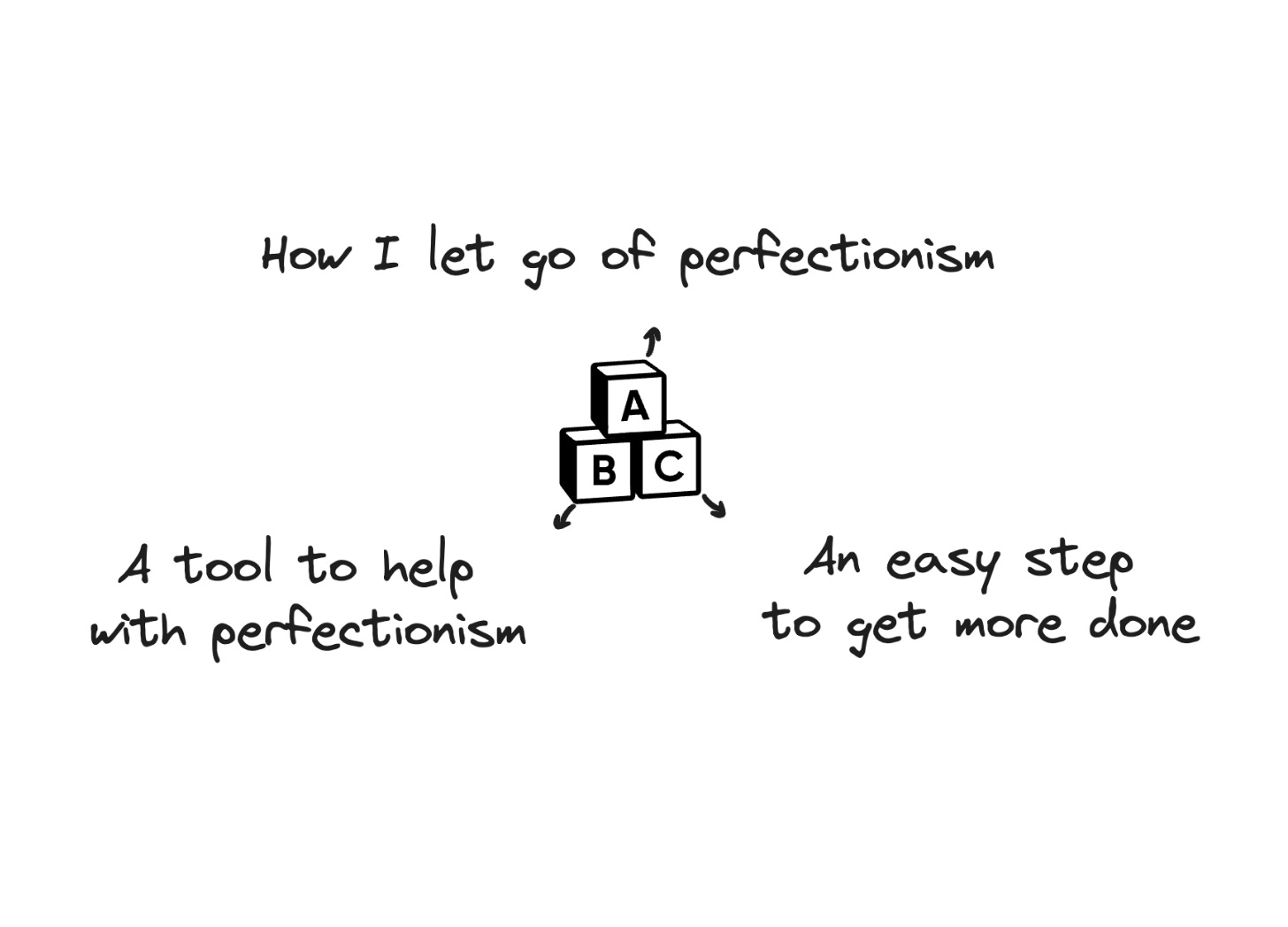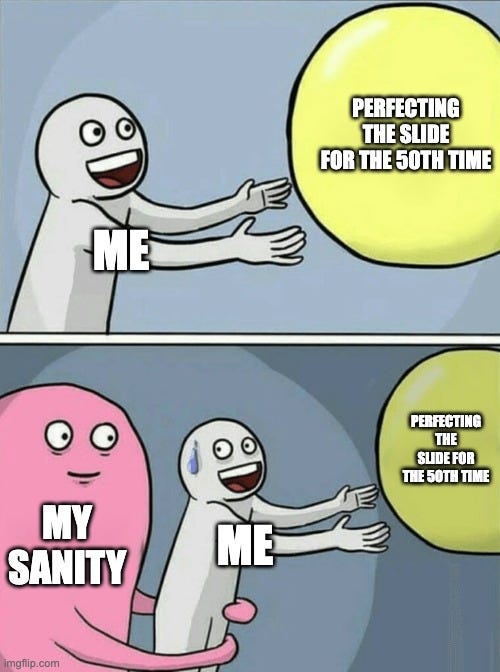🔤 The truth about perfectionism (from someone who knows)
Exhausting yourself trying to be perfect? There's a better way...
Hey there! I’m Robert. Welcome to a free edition of my newsletter. Every week, I share 1 piece of advice 📖, 1 breakthrough recommendation 🚀, and 1 challenge 💥 to help leaders in tech achieve a growth mindset, transform their communication & influence, and master their emotions. Subscribe today to become the person and leader that people love, respect, and follow.
“Perfectionism is the voice of the oppressor, the enemy of the people. It will keep you cramped and insane your whole life.”
— Anne Lamott
Do you ever get stuck obsessing over tiny details that no one else cares about, but for some reason, they keep you up at night?
I’ve been there—deep in the perfectionist trap, feeling like an imposter.
It wasn’t just about wanting things done well, it was this irrational need for everything to be flawless.
Every email, every meeting, every presentation.
It really burned me out.
I spent way too much time agonizing over tiny details, procrastinating because I feared starting something that wouldn’t be perfect, or constantly redoing work that was already “good enough.”
SPOILER ALERT: Perfectionism is a productivity killer.
What I’ve learned is that perfectionism isn’t about doing things better—it’s about fear.
Fear of being judged.
Fear of not being enough.
Fear of failure.
I realized—nothing is ever perfect.
So why are we chasing something that doesn’t exist?
Today, I’m sharing how I learned to manage my perfectionist tendencies, freeing myself to get more done with less stress.
This Week’s ABC…
Advice of the Week: How I learned to stop letting perfectionism slow me down.
Breakthrough Recommendation: A must-read book that helped me redefine success and stop chasing impossible standards.
Challenge: One small thing you can do this week to stop perfectionism from hijacking your productivity.
Advice of the Week: 3 Steps To Get Out Of Your Own Way
Perfectionism disguises itself as a “strength.”
It makes us feel like we’re setting higher standards or pushing ourselves to achieve more.
But in reality, it’s a roadblock.
It keeps us from starting, from finishing, and from feeling satisfied with our work.
Here are 3 steps how I’ve learned to deal with it:
Set “Good Enough” Benchmarks: Not every task deserves 100% effort. Some things just need to be “good enough.” Decide what the “good enough” version of your task looks like, and when you hit that mark, stop tweaking. Perfectionism will tell you it’s not done yet, but it is. Apply the Pareto principle (80% of the value comes from 20% of the effort).
Embrace Imperfection: The pursuit of perfection is actually the fear of making mistakes. Embracing imperfection is about accepting that mistakes are part of the process, and they’re often the most valuable learning moments. I try to remind myself: “Perfect is the enemy of the good.”
Ask for Feedback Early: Perfectionists tend to delay feedback, fearing criticism. Flip that around. Share your work before it’s finished and get input. It helps you realize things don’t have to be perfect—they just have to be moving forward. You’ll make more progress that way.
Example: I used to spend hours perfecting presentations before sending them to the team. Now, I send a rough draft and ask for feedback early on. Not only does it save me time, but I often find my teammates’ input improves the result.
Takeaway: Perfectionism doesn’t create high-quality work—it creates unnecessary stress. Aim for progress, not perfection, and you’ll find that your work is still excellent without the extra pressure
But what really helped me turn the corner on perfectionism? This week’s breakthrough recommendation…
Breakthrough Recommendation: The Control Compass
Perfectionism often stems from trying to control every aspect of a situation—which is impossible.
Trust me, I’ve tried. It doesn’t work.
And it isn’t healthy for you!
The single most effective tactic I use to overcome this is what I call the Control Compass.
It’s incredibly simple.
Here’s how it works:
Draw a T-Table
On the left, write down everything that’s in your control about the situation.
On the right, list everything that’s out of your control.
You will immediately feel better
This simple method brings clarity, helping you focus on what you can actually influence—and let go of the rest. It’s a game-changer when perfectionism strikes because it shifts your attention from what’s stressing you to what’s actionable.
Why it works:
Reduces overwhelm by breaking down complex issues.
Reminds you that not everything is within your power—and that’s okay.
Gives you a clear path forward by focusing on what you can control.
Next time perfectionism creeps in, grab a pen, and try this out.
It’s helped me break free from the endless cycle of overthinking and achieve real progress.
Here’s a template link—try it yourself!
Challenge: Control What You Can, Let Go of the Rest
Here’s a simple challenge for the week: STOP tweaking and perfecting.
Pick one project or task you’re working on, set a deadline for when it’s “good enough,” and then leave it alone.
No more edits, no more second-guessing.
Share it with others.
See how much faster you can move forward when you let go of perfectionism.
You got this!
Liked this article? 💚 Click the like button.
Feedback or addition? 💬 Add a comment.
Know someone that would find this helpful? 🔁 Share this post.
Please take a 5 second survey to help me make this newsletter better for you.
P.S. Want reminders on growth, empathy, and leadership? Follow me on LinkedIn, Threads, and Twitter.





Escaping perfectionism brings so much more ease and lightness. A simple „it is enough“ and allowing processes to take time is whole different mindset. What an exciting step moving in together! Congrats ✨